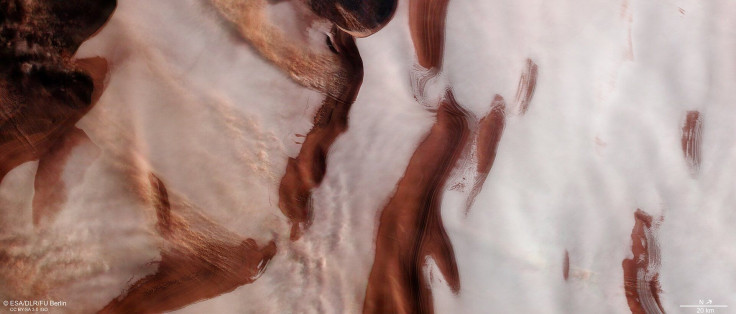ESA Snaps Photos Of Storms And Ice Caps On Mars

KEY POINTS
- The ESA shared a new photo of Mars' north pole
- The photo was taken by ESA's Mars Express mission
- The image shows the ice caps and storms on Mars
The European Space Agency (ESA) was able to capture stunning photos of ice caps and storms on Mars’ north pole. As noted by the agency, the appearance of this region slightly changes through the various seasons.
The images were captured through the ESA’s Mars Express mission, which is composed of a lander and an orbiter. This mission has been observing Mars since it arrived on the planet in 2003.
In the latest photos captured by the mission, the ESA was able to provide a stunning glimpse of Mars’ northern region. According to the ESA, one of the photos features a portion of a massive ice cap sitting at the Red Planet’s north pole.
The dark streaks that can be spotted in the photo are depressions and indentations on the surface of the ice caps. The ESA explained these features were made by the harsh winds and storm activities on Mars.
“The landscape here is a rippled mix of color,” the ESA said in a statement. “Dark red and ochre-hued troughs appear to cut through the icy white of the polar cap; these form part of a wider system of depressions that spiral outwards from the very center of the pole.”
According to the ESA, Mars’ north pole is covered in thick layers of water ice even during the summer seasons. But during winter, the extremely cold temperatures causes carbon dioxide to precipitate and accumulate as ice. This forms an additional layer of ice on top of the existing ice cap. This natural phenomenon also creates carbon dioxide clouds over the region, which makes it hard to view from orbit.
In addition to the polar ice cap, ESA’s photo also features traces of storms in the region. As noted by the agency, the dark features on the left side of the photo are cloud streams that were formed by storms.
“Visible to the left of the frame are a few extended streams of clouds, aligned perpendicularly to a couple of the troughs,” ESA explained. “These are thought to be caused by small local storms that kick up dust into the Martian atmosphere.”
© Copyright IBTimes 2024. All rights reserved.





















